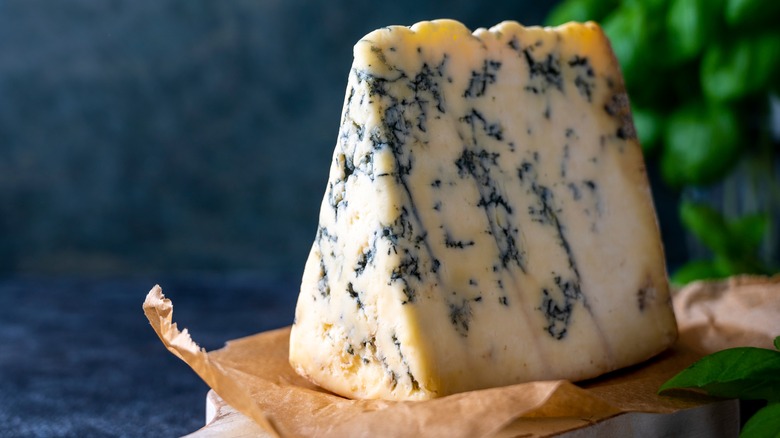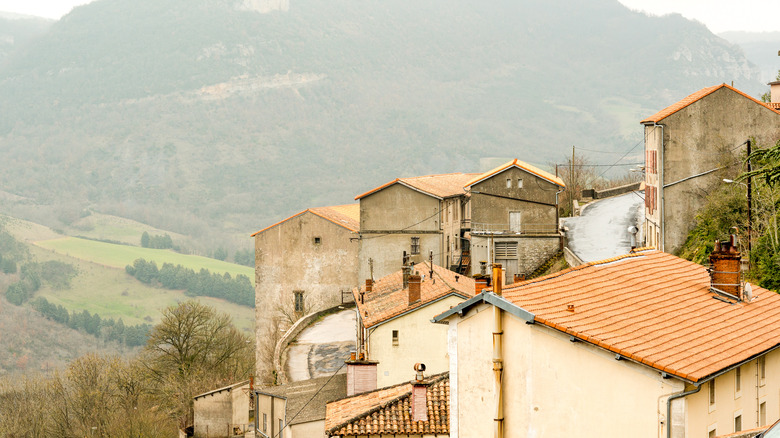The Idyllic Myth Behind Roquefort Cheese's Origin
Cheese is taken very seriously in France, and is a core aspect of the country's culture and cuisine. One of Brillat-Savarin's most famous aphorisms, written in the early 19th century, maintains that "a dinner which ends without cheese is like a beautiful woman with only one eye." According to Cheese Connoisseur, there are about 1,600 cheese types produced nationwide — and just as wines are rigorously classified and legally protected based on region and traditional production methods via France's Appellation d'Origine Contrôlée (AOC), so too are cheeses.
Roquefort was the first cheese ever granted AOC status and this was not by accident. Roquefort has long been hailed as the king of French cheeses, explains Smithsonian, and each aspect of its creation is as strictly formalized as that of champagne, or first-growth Bordeaux. Roquefort, for example, can only be made in Roquefort-sur-Soulzon, a municipality in southern France, per the Official Journal of the European Union.
Additionally, its raw ewe's milk can only be sourced from the local Lacaune sheep, and the cheese must be aged for a minimum of three months in regional caves, where it is exposed to Penicillium roqueforti. The latter, Food & Wine observes, is the harmless mold that gives the blue cheese its distinctively colored veins and unmistakable taste and aroma.
Myth versus reality in the history of Roquefort cheese
Brillat-Savarin wasn't the first to refer to cheese using the metaphor of a beautiful woman. Roquefort's origin story centers around a shepherd, who while enjoying a local cheese on rye, is diverted from his meal by the appearance of a beautiful woman. He follows her, as France Today relates, and completely forgets about his lunch, which he leaves in a cave for safekeeping. By the time he finds it again, a mold has formed. But he hungrily devours it anyway, and thus accidentally discovers the strange yet delicious secret to making Roquefort cheese.
This romantic story is just that, of course. As Forbes notes, a recent genetic study has proven conclusively that Penicillium roqueforti did not originate from the regional caves in Roquefort-sur-Soulzon, or from spoiled bread (although rye is the likely source). Ancient myth aside, Roquefort has been around for a very long time — over 1000 years, according to Cheese Connoisseur. The first historical evidence for its production, however, dates back to 1411, per Smithsonian. That's the year it first gained legal protection from King Charles VI of France. Its AOC status, meanwhile, was granted in 1925.

